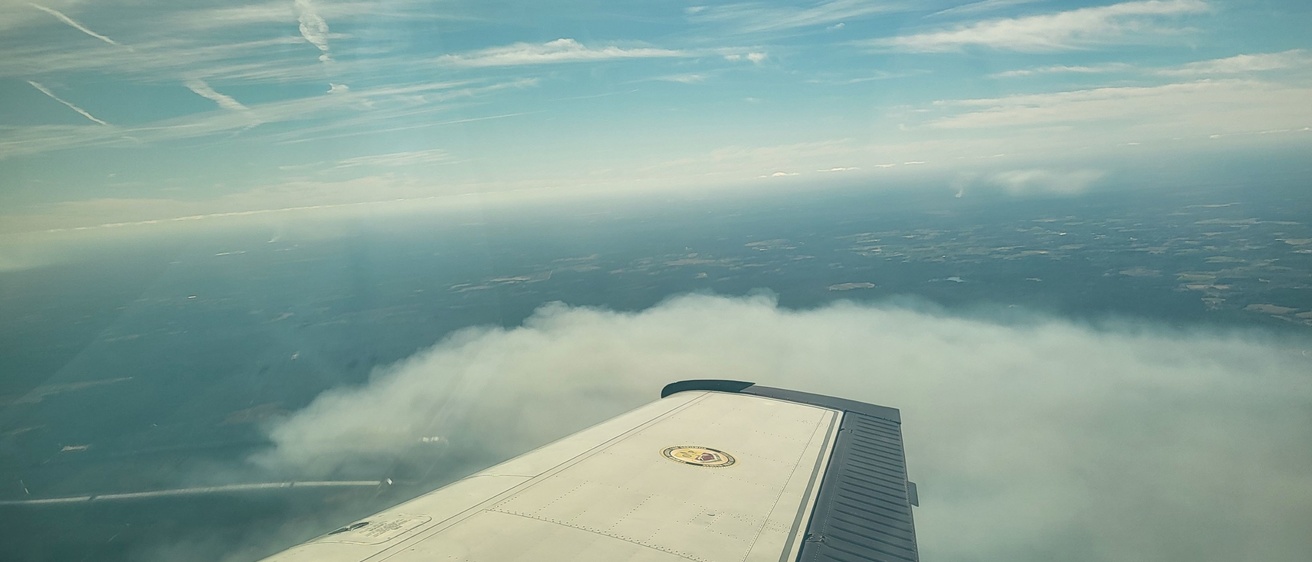University of Iowa engineering students, supported by staff at the Operator Performance Laboratory (OPL), took to the Georgia sky to capture data that could enhance the ability to remotely detect wildfires.
NightHawk, an instrument developed at Iowa, was the catalyst for the research. The low-light imaging sensor is designed to collect nighttime ground data via four 2D imagers with primarily visible wavelengths, including red, blue, green, and near infrared channels.
Steve Tammes and Will Julstrom, graduate students studying chemical and biochemical engineering, conducted the research at Fort Stewart, a United States Army post in Georgia.
OPL members Randall "Tarzan" Marzen, Spenser "Savage" McIntyre, and Todd Gibbs provided air support in OPL’s Beechcraft A36 Bonanza, on which NightHawk was mounted to gather data.
NightHawk was designed by Jun Wang, James E. Ashton Professor of Engineering and departmental executive officer of chemical and biochemical engineering. Wang's team and OPL are part of the Iowa Technology Institute, a research arm of the College of Engineering.
The initiative is part of an effort to expand space-based research on campus and is funded through the university’s public-private partnership (P3) grant program with its utility provider.
